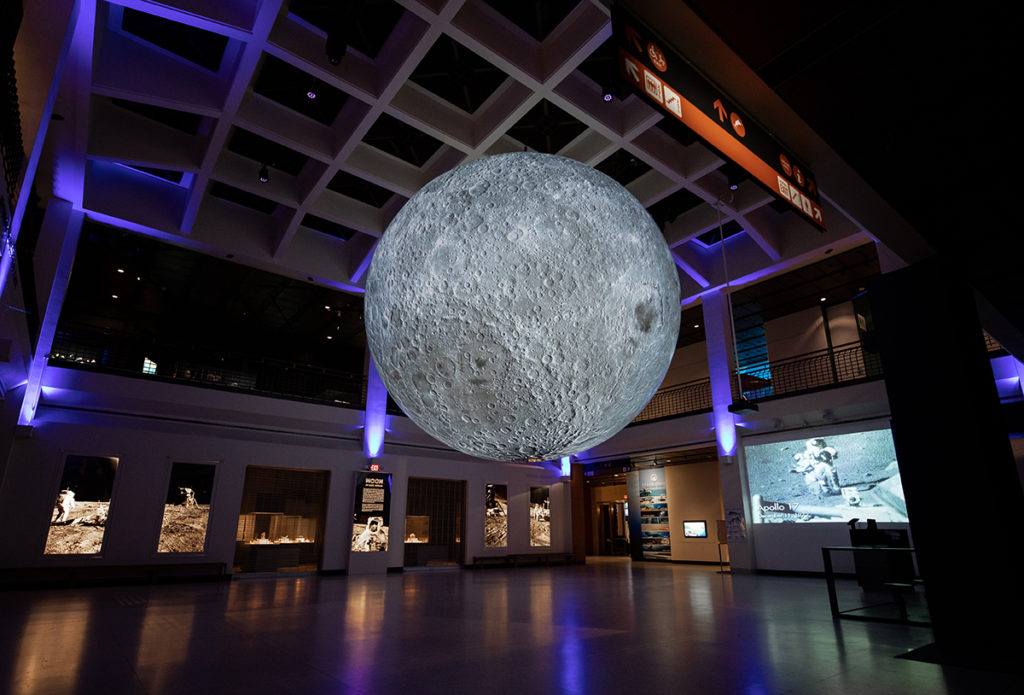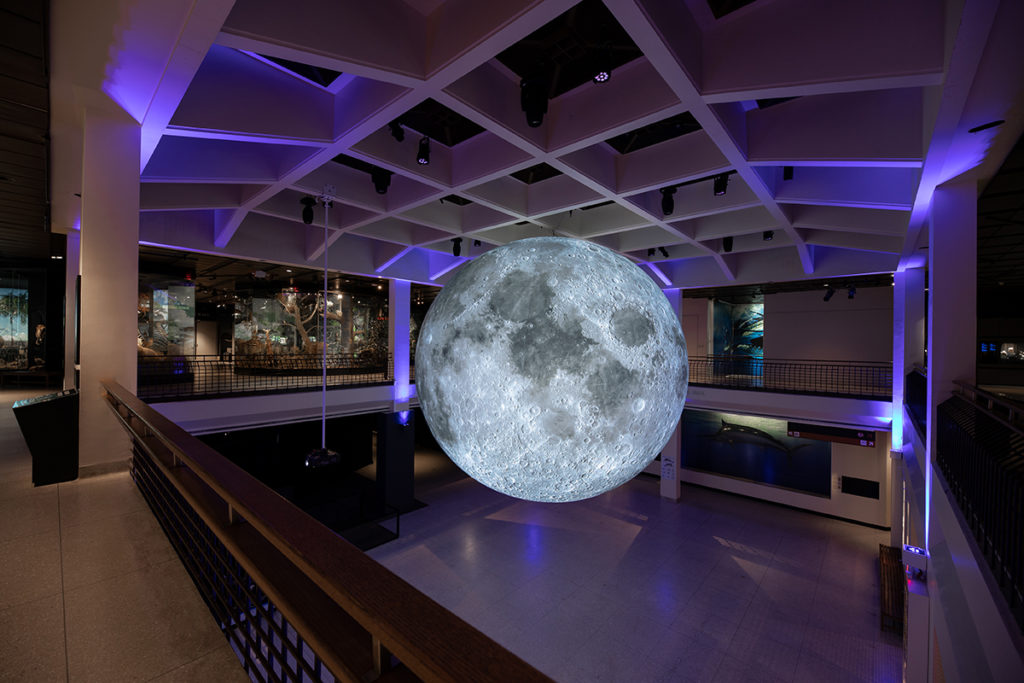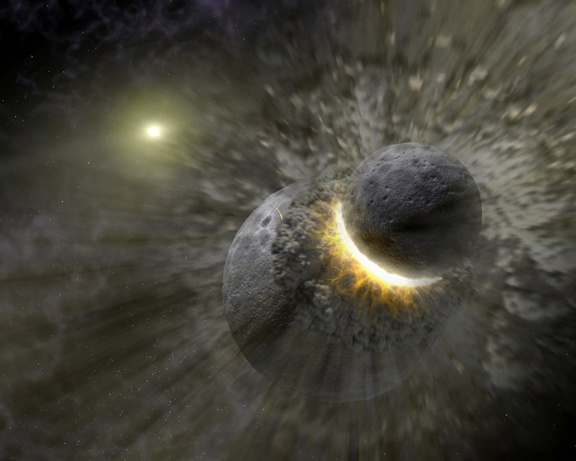When you come see our giant scale model Moon and walk around it, you’ll notice how different the near side (which always faces us) is from the far side (which we never see). Large, dark lava flows called ‘maria’ cover almost a third (31.2%) of the near side but only 1% of the far side.

Ever since the space race, when the Russian Luna 3 and then our Apollo 8 missions revealed the far side, astronomers have sought to understand why that side of the Moon looks so different from the what we see in the sky. Just last month, scientists put forward a new idea to explain this.
The maria are large basaltic lava flows. They most likely formed between 3.5 and 3 billion years ago. This is after the Late Heavy Bombardment (4.1 to 3.8 billion years ago) in which asteroids pelted all bodies in the solar system, including the Moon. Cratering rates dropped off considerably after that. Thus, maria are not nearly as heavily cratered as the lunar highlands.

But why wouldn’t this lava flow everywhere on the Moon, rather than preferentially on the near side? That the near side is generally lower in elevation than the far side cannot be the whole explanation. The very lowest elevations on the Moon are in the South Pole-Aitken basin, which is on the far side. However, that basin contains no maria.
Part of the explanation lies in the certain components of lunar basalts and breccias known as KREEP. This stands for potassium (chemical symbol K), rare earth elements (REE) and phosphorous (P). Rocks containing KREEP underlie a large section of the near side, particularly Oceanus Procellarum, the largest lunar mare. They are found only sparingly on the far side, however. Many rare-earth elements occur in minerals with thorium or uranium. These elements are radioactive, as is 40K, a heavy isotope of potassium. That makes them heat sources which would allow for more lava flows. But why would the near side have more KREEP than the far side?
In 2012, data from the Gravity Recovery and Interior Laboratory (GRAIL) mission indicated that the far side’s crust is not simply thicker, but includes an extra layer which is not on the near side. A team of researchers then ran 360 numerical simulations to see what event might result in a extra layer on the far side. They found that if an object 480 miles across stuck near side at 14,000 mph, enough debris would fall on the far side to form a layer three to six miles deep–precisely what scientists saw in the 2012 GRAIL data.

Some had proposed that the original Moon-forming impact with Theia formed smaller bodies that combined to form the Moon. This impactor, however, would be a world from outside the Earth/Moon system, on its own orbit around the Sun prior to impact.
In addition to the extra thickness of the far side crust, this impact theory would also explain the higher KREEP concentration on the near side. These materials would have come in with the impacting object.
Is this mystery now totally resolved? Probably not, because that’s not how science works. We’ll keep testing this new idea, and refining it with more data. Perhaps, though, we have taken one small step towards shedding light on a question that has baffled us so long.





